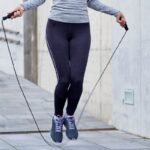You’re tired of weak forearms holding you back? You crave a powerful grip that effortlessly handles heavy weights, tools, or everyday tasks? You’re not alone. Many people overlook the importance of forearm training, leading to underdeveloped muscles and potential injury. This post will empower you with the knowledge to conquer weak forearms. We’ll unveil the best dumbbell exercises, teach you proper form, and equip you with a personalized workout routine to transform your grip strength and overall arm power.
Effective Dumbbell Exercises for Forearm Strength
Hammer Curls
Hammer curls are a fantastic choice for targeting both the flexor and extensor muscles of your forearms. The neutral grip engages more muscles, leading to a balanced workout. Consistent hammer curls can create significant improvements in overall grip strength, which translates into more power in many activities.
Reverse Curls
Reverse curls are especially effective for isolating the forearm flexors. By positioning your palms facing away from you, you focus the stress directly on these muscles, allowing for greater strength development. This exercise is crucial for building a strong and defined forearm, especially for activities demanding heavy grip.
Dumbbell Wrist Extensions
Dumbbell wrist extensions are designed to specifically strengthen the forearm extensors. These muscles are often overlooked, and neglecting them can lead to imbalances. This exercise enhances the ability to lift and hold heavier objects and makes your grip more stable, which can also protect your wrists and other joints.
Dumbbell Wrist Curls
Dumbbell wrist curls are a cornerstone exercise for targeting the forearm flexors. These muscles are crucial for many daily movements and sports. With proper form and consistent practice, you’ll notice a remarkable improvement in your ability to lift and grip objects effectively.
Farmer’s Walk
The farmer’s walk, using dumbbells or kettlebells, is a compound exercise that dramatically improves overall forearm and grip strength. It challenges your entire body, engaging core muscles and shoulders, while placing substantial stress on the forearms for an intense workout. This exercise builds a remarkably potent grip, essential for athletes and anyone who handles heavy objects regularly.
Mastering Form and Technique for Injury Prevention
Neutral Grip
Maintaining a neutral grip is essential for proper wrist alignment during curls and extensions. This prevents unnecessary stress on your wrists and ensures a more focused workout on the target muscles. Proper grip significantly reduces the risk of injury and maximizes results.
Wrist Position
Keep your wrists straight throughout the entire exercise. Avoid hyperextending or flexing your wrists, as this can lead to strain and injury. Maintaining a straight wrist position throughout each exercise is vital for ensuring effective muscle engagement and minimizing the risk of injury.
Weight Selection
Start with a weight that allows you to maintain perfect form throughout the entire range of motion. Gradually increase the weight as you get stronger, enabling progressive overload, which is essential for muscle growth and avoiding injury. Don’t compromise form for weight. Start light and gradually increase.
Warm-up
A thorough warm-up is critical before any exercise, and forearm workouts are no exception. Dynamic stretches and light cardio will prepare your forearms for the workout, reducing the risk of injury and improving your range of motion. This preparation enhances blood flow to the muscles, leading to better performance.
Cool-down
A cool-down is just as important as a warm-up. Gradual stretching after your workout helps to reduce muscle soreness and aids in recovery. This will promote blood flow back to the muscles, reducing stiffness and soreness. It aids in the removal of metabolic waste products, improving your body’s recovery processes.
Building a Killer Dumbbell Forearm Workout Routine
Beginner Routine (3x per week)
For beginners, consistency is key. Three workouts a week, with three sets of 10-12 repetitions for each exercise, will allow your forearms to adapt and build strength. Focus on mastering the proper form and technique to ensure effective muscle activation and avoid injuries.
Intermediate Routine (4x per week)
As you progress, you can increase the intensity by adding a workout to your schedule. Four workouts per week with four sets of 8-12 repetitions are effective for intermediate lifters. Continuously monitor your form and adjust the weight to maintain the correct form while challenging your muscles.
Advanced Routine (5x per week)
For advanced lifters, you can increase your workout frequency. Five sessions per week, with 5 sets of 6-8 repetitions and progressively increasing weight, allows you to challenge your body to maximize growth. Progressive overload is essential. Increase weight, sets, or reps strategically for sustained progress.
Workout Frequency
Aim for two to three workouts per week to allow your forearms adequate time to recover. Remember, rest is just as important as the workout itself. Proper rest periods enable your muscles to repair and grow stronger. Overtraining can hinder your progress, so take the time to recuperate.
Building Size and Strength
Progressive Overload
Continuously challenging your muscles is critical for growth. Increase the weight, sets, or reps over time to stimulate muscle growth. This gradual increase in stress on the muscle fibers forces them to adapt, leading to growth and strength gains. Be mindful of any soreness or pain you experience.
Nutrition and Recovery
Fuel your muscles with a balanced diet rich in protein to support muscle repair and growth. Prioritize adequate sleep for optimal recovery. Your body repairs and rebuilds muscle tissue during rest, so make sure you’re getting enough sleep to support this process.
Rest and Recuperation
Allow your forearms sufficient time to recover between workouts. Rest is crucial for muscle growth and repair. Overtraining can lead to fatigue, injury, and reduced performance. Rest periods allow your muscles to recover and rebuild, leading to better results.
Avoiding Pain and Discomfort
Proper Warm-up
A dynamic warm-up is crucial before any workout. Prepare your muscles for the exercise and improve flexibility by engaging in dynamic stretches and light cardio. This prepares your muscles for the workout, enhancing performance and reducing injury risk.
Listen to Your Body
Pay attention to any pain or discomfort. Never push through pain. If you experience pain, stop the exercise immediately. Listening to your body is essential for injury prevention. Don’t ignore discomfort. Prioritize your well-being and avoid any actions that could cause pain.
Wrist Pain Management
Maintain proper form throughout the exercises, gradually increase the weight, and ensure ample rest. These strategies are crucial for protecting your wrists. Follow proper form, increase weight gradually, and ensure adequate rest to prevent wrist pain.
Spotting
Consider having a training partner spot you, especially during heavier sets to assist in preventing injuries and maximizing safety. A spotter ensures you avoid potential harm during demanding exercises, preventing injury and improving overall safety.
Combining Forearm Workouts with Other Exercises
Full Body Workouts
Incorporate forearm exercises into your existing full-body workouts for a more comprehensive workout. This strategy maximizes muscle engagement and strength building. Integrating forearm exercises into your routine strengthens multiple areas and optimizes your overall training regimen.
Bicep/Tricep Workouts
Perform forearm exercises on the same day as bicep/triceps workouts for a synergistic effect. This approach enables concurrent muscle development and improves your training efficiency by streamlining your workout routine.
Time-Efficient Dumbbell Forearm Workouts
Quick and Effective
Focus on compound movements, such as the farmer’s walk, that work multiple muscle groups simultaneously. This approach maximizes training efficiency and ensures significant progress. Maximize results by concentrating on movements that target several muscle groups efficiently.
Short Workouts (30 mins)
Prioritize intensity and proper form in your 30-minute workouts. This strategy enables quick and effective forearm training, allowing you to achieve substantial results in a short period. Concentrate on high intensity, proper form, and effective movements to maximize results in your workout.
Equipment Considerations and Alternatives
Dumbbell Variations
Utilize various dumbbell weights to adjust your workout intensity. This allows you to adapt the routine to your current strength level, ensuring a challenging and productive workout. Varied weights enable you to tailor the routine to your current capabilities.
Home Workout Options
If dumbbells are unavailable, consider alternatives like resistance bands or bodyweight exercises to engage your forearms. Explore alternatives if dumbbells are unavailable. Resistance bands or bodyweight exercises offer effective options for building and maintaining forearm strength. Don’t let a lack of equipment deter you from your fitness goals.
Conclusion
This comprehensive guide empowers you to build powerful, defined forearms using dumbbells. Follow the principles of proper form, gradual progression, and consistent effort. Track your progress and adapt the routine to your needs. You’re now equipped to achieve your goals and transform your grip strength. Start today and experience the difference a strong grip can make in your life!








